$0.00
No products in the cart.

The Roe deer (Capreolus capreolus), also known simply as the Roe is associated with the Celtic horned God, Cernunnos, an ancient god of fertility and wild animals. The name Roe is believed to come from an older English word that possibly means streaked, spotted, or striped. Similar terms are found in old Germanic, Norse, and Dutch languages as well. The species is split into three sub-species; the European, Siberian and Chinese Roe deer. As their name suggests, they are native across Europe, Southern Russia and China.
The Roe is a small deer, reddish to grey-brown, and well-adapted to cold environments. The species is widespread, from the Mediterranean to Scandinavia, from Scotland to the Caucasus, and east to northern Iran and Iraq. The culture around the hunting of Roe deer is varied across their distribution, especially in peri-urban settings where their interface with humans is fostered due to their value and protection as a game species.

Linnaeus first described the Roe deer in the modern taxonomic system as Cervus capreolus in 1758. Despite their Old World distribution, Roe deer are more closely related to New World deer than to Old World deer. Although Roe deer were once classified as belonging to the Cervinae subfamily, they are now classified as part of the Odocoileinae, which includes the deer from the New World. The family Cervidae divides into two fairly distinct groups, the Old World deer (subfamily Cervinae) and the New World deer (subfamily Capreolinae). This division reflects where the deer originally evolved; however, now it is not a geographical distinction but instead derives from their different foot structures (Geist).
The Soviet mammologist, Vladimir Sokolov had recognised these as a separate species from 1985 using electrophoretic chromatography to show differences in the fractional protein content of the body tissues, the next year he showed that there were differences in the skull morphology, and a year after he used sonographs to demonstrate that the fawns, females and males made very different noises between species.
Alexander S. Graphodatsky looked at the karyotypy (an individual’s collection of chromosomes) to present more evidence to recognise these Russian and Asian populations as a separate species, and, renamed the eastern or Siberian roe deer (Capreolus pygargus) in his 1990 paper. The taxa are differentiated by the B chromosomes found in C. pygargus, populations of this species gain more of these strange ‘junk’ chromosomes as one moves further east(“Genotyping of Capreolus pygargus Fossil DNA from Denisova Cave Reveals Phylogenetic Relationships between Ancient and Modern Populations”).
This new taxonomic interpretation was first followed in the American book Mammals Species of the World in 1993. Populations of the Roe from east of the Khopyor River and Don River to Korea are considered to be this species (“Genetic diversity and phylogeography of Siberian Roe deer, Capreolus pygargus, in central and peripheral populations”).

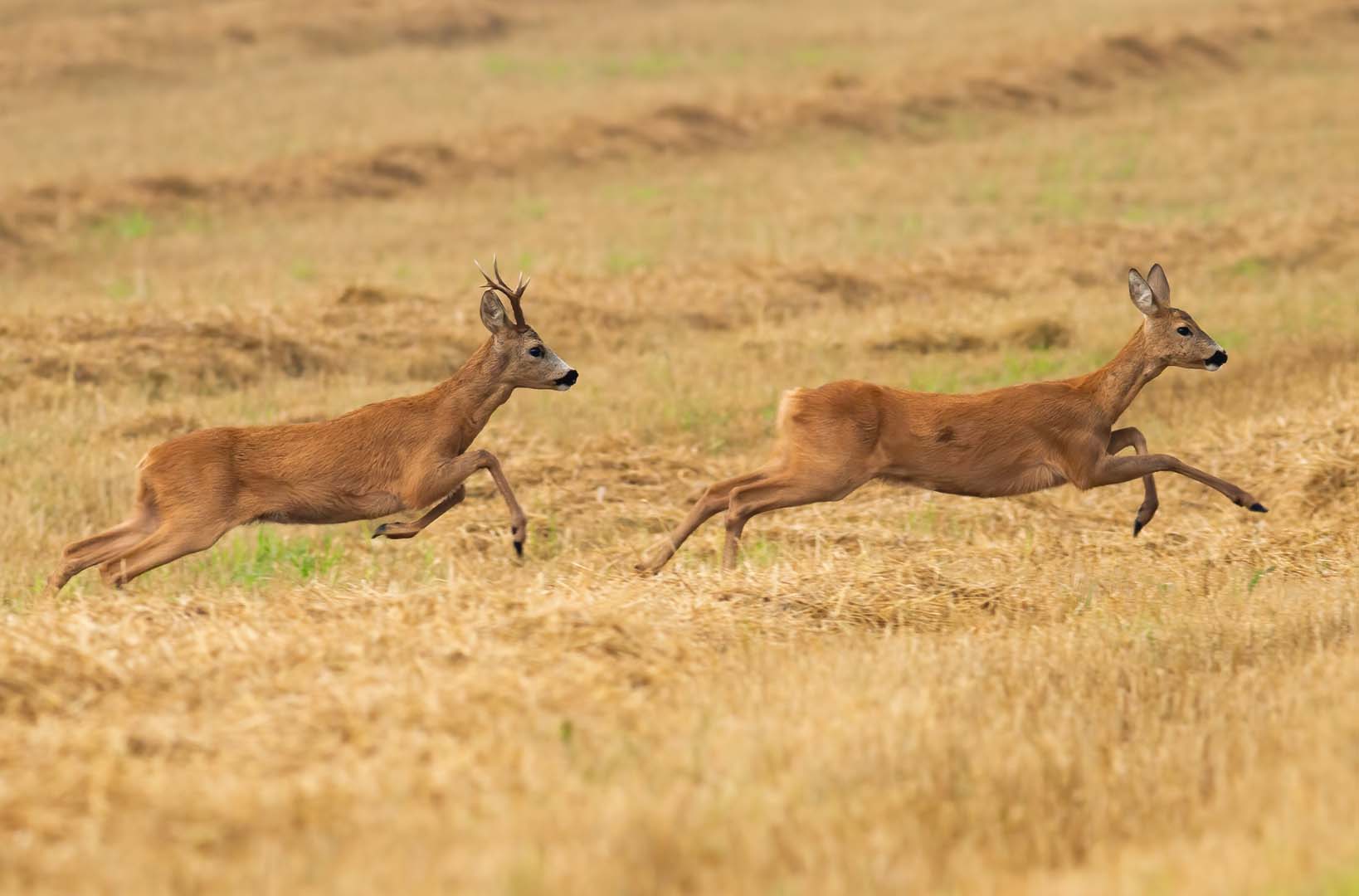
The 2005 Mammals Species of the World, gives the following sub-species
The Roe deer is typically not at risk of hybridisation due to lack of suitable species overlap however some limited data is available in regards to the animals producing offspring with Hog deer, as is often the case, this mating took place in artificial settings. The reported mating took place at Dresden Zoo in 1862 with the Hog Deer (Axis porcinus) and a Western Roe Deer (Capreolus capreolus) although a resulting hybrid was born; the offspring died at 8 days old. Further afield, a reported mating took place at the hands of Carl Niklas Hellenius, student of Carl Linnaeus. Again, under artificial setting he gives the following account (Hellenius 1790, pp. 289-291) of a hybrid produced from a mating between a ram (Ovis aries) and a Roe deer (Capreolus capreolus). The report originally appeared in the Swedish scientific journal Kongl. “Five years ago, I became the owner of a Roe deer brought here to Turku from Cagliari (the capital of Sardinia) by a merchant marine captain”. He goes on to say that the Roe deer becomes excessively agitated during estrus, and “As no mate of her own species was available, it occurred to me to couple her with a billy goat”. The pairing did not go well, as the Roe was uninterested in the Billy’s aggressive courting and as such, he reports that two efforts proved fruitless. He continues, “In the end, I chose a breeding ram because I thought such a pairing would not be fraught with the same problems that had thwarted my earlier efforts. So in the early spring I brought a fine ram of the Scanian race.” This unlikely pairing appears to have worked, as, “to the doe, who from the outset got along with him well. Nor was he averse to her. With curiosity, I awaited the time of estrus, but October and November brought no change in their temperament, and I therefore feared an equally fruitless result. But at the end of March, I noticed the deer’s belly was clearly swollen and later saw quite certainly that she was pregnant. Early in May she gave birth to a kid, which was extremely quick and lively.
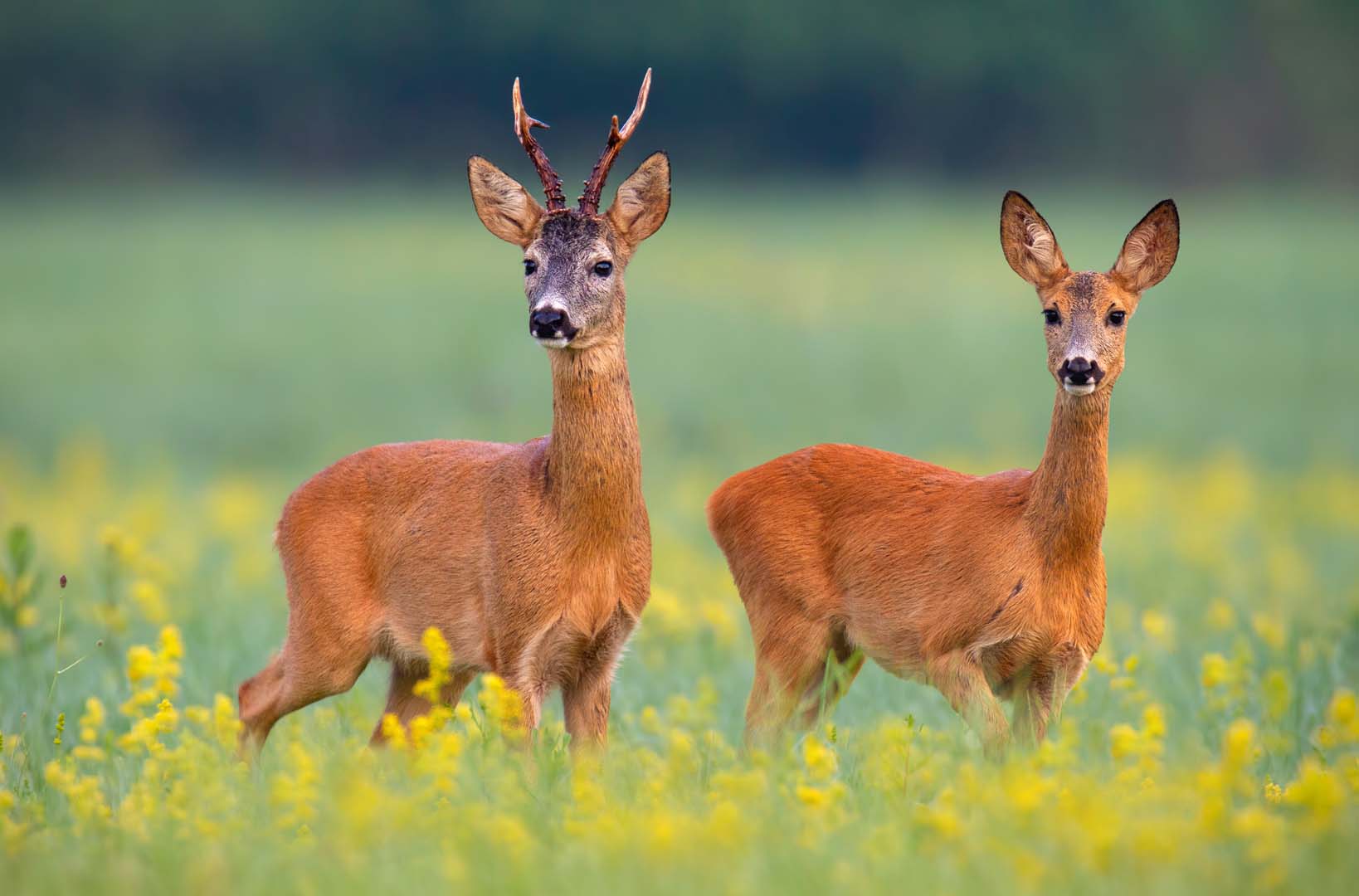
The male of the species is referred to as a Buck and the female, a Doe. Roe deer gradually become somewhat larger as one moves further to the east, peaking in Kazakhstan, then becoming smaller again towards the Pacific Ocean. Despite this (comparatively) small size to other species, the Roe deer will have rather long legs for their size. The species uses those legs to propel itself, when alarmed into a long stride, almost length jump in order to run.
The European Roe deer is the smallest of the sub-species while the Siberian and Chinese Roe are slightly larger in both height at the shoulder and weight. As an example, G. K Whitehead lists the following size characteristics of an adult buck for the three subspecies;
The Roe deer’s coat will go from a reddish foxy brown in summer to a grey or brown with a conspicuous white rump patch in winter. The male has short, usually three-tined antlers that are enlarged at the base, apparently to protect the skull against antler punctures.
The face and head of the Roe is comparatively small, and there is a black streak that runs from the nostrils to the angle of the mouth, the chin is white, but there is no throat patch in their summer pelage. Into the winter, the coat of the Roe darkens and becomes very grey with flecked yellow. In some areas two white throat patches, noticeable in some animals, and in particular the buck, develop on the throat. The rump patch becomes white, which under the influence of excitement or alarm, can be expanded to form a large white caudal disk comparable to a Sika deer. (The Whitehead encyclopaedia of the world. Pg242. Whitehead, G Kenneth). Whitehead goes on to reference that in a typical configuration the European Roe antler configuration will have six counter parting tines, although multi-tined bucks have been recorded. In contrast, the Siberian and Chinese Roe will often produce eight tines, with the rear upper tine often terminating at a fork. The Roe is an almost tailless deer.
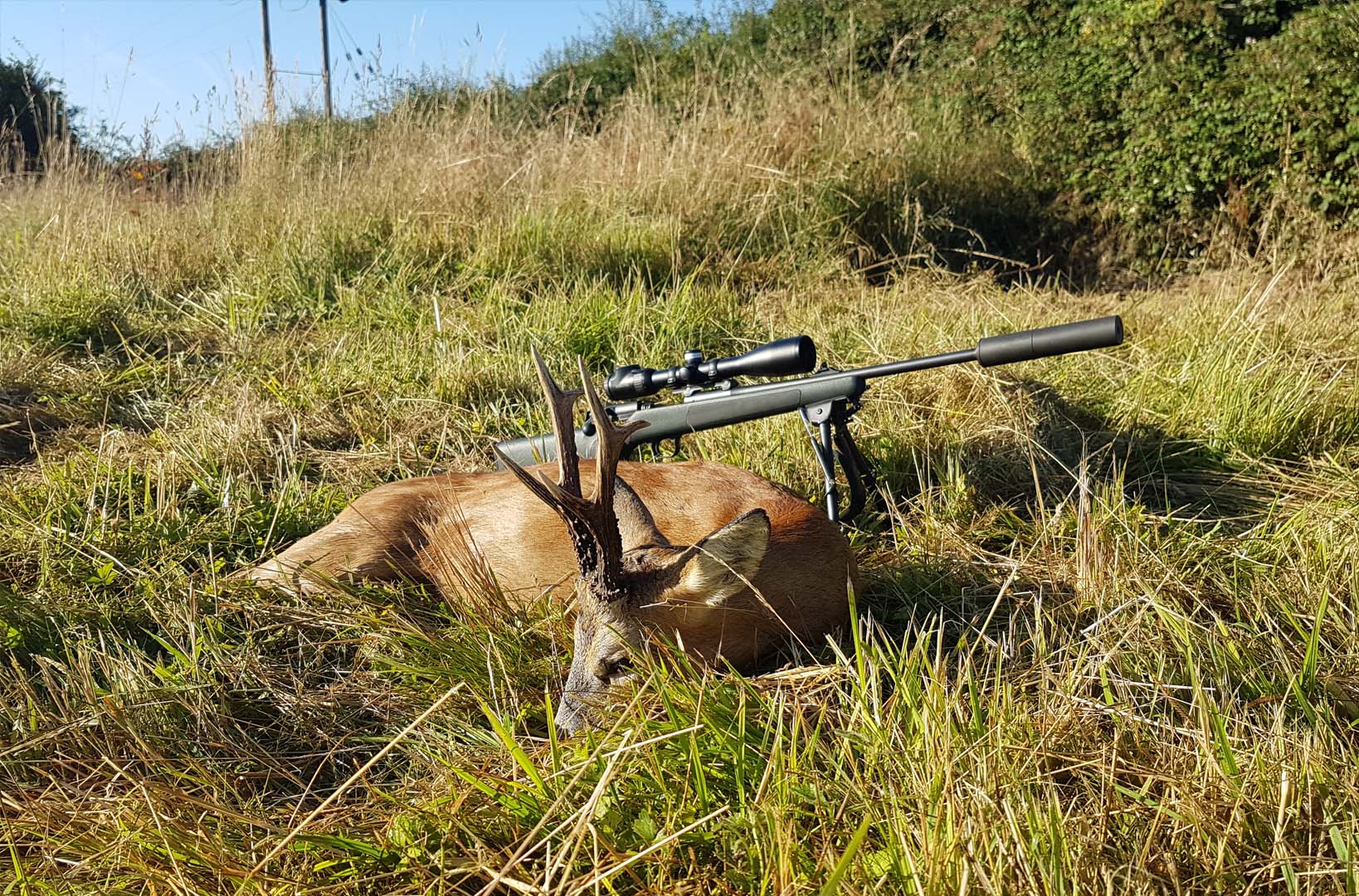
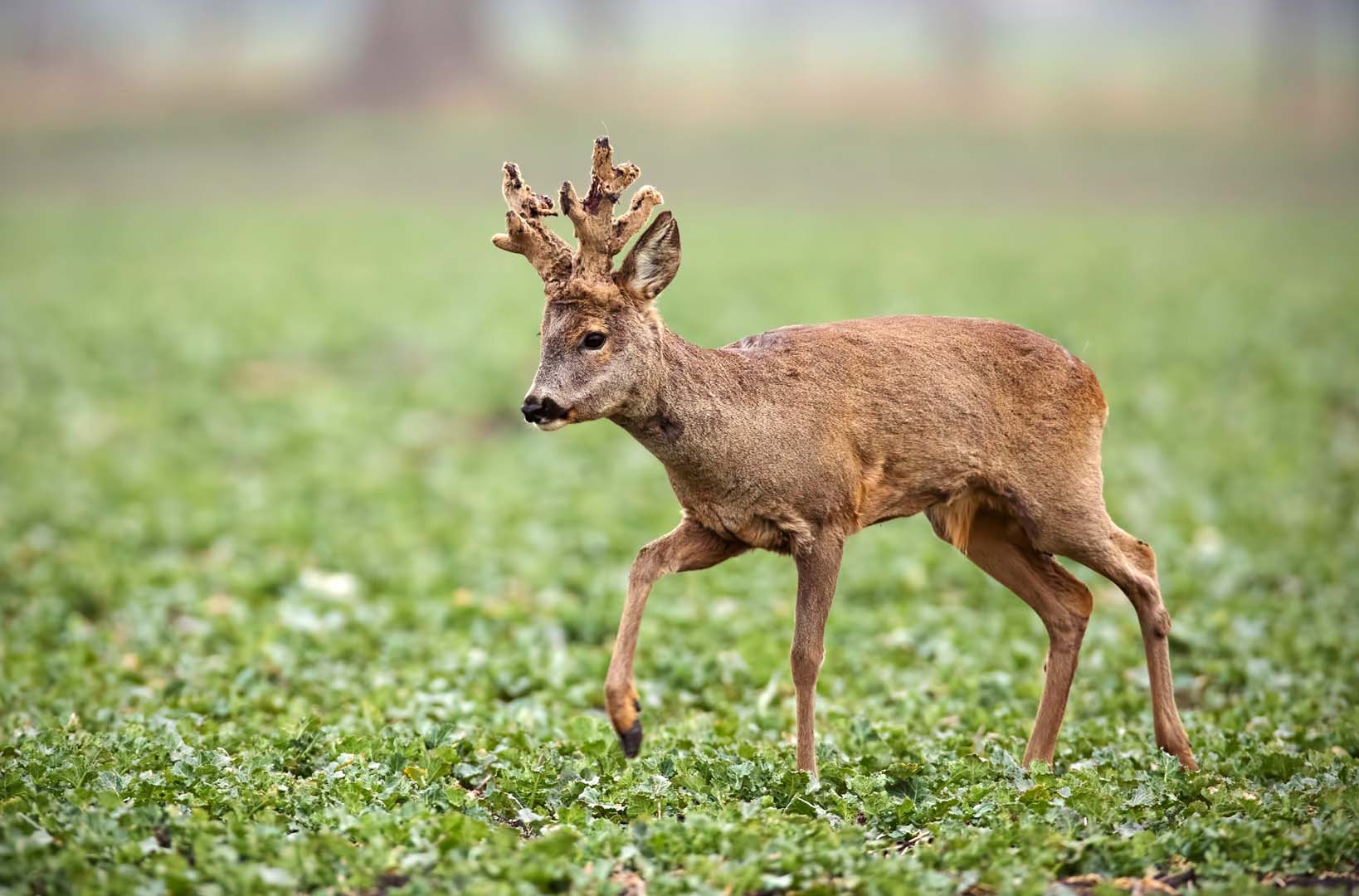
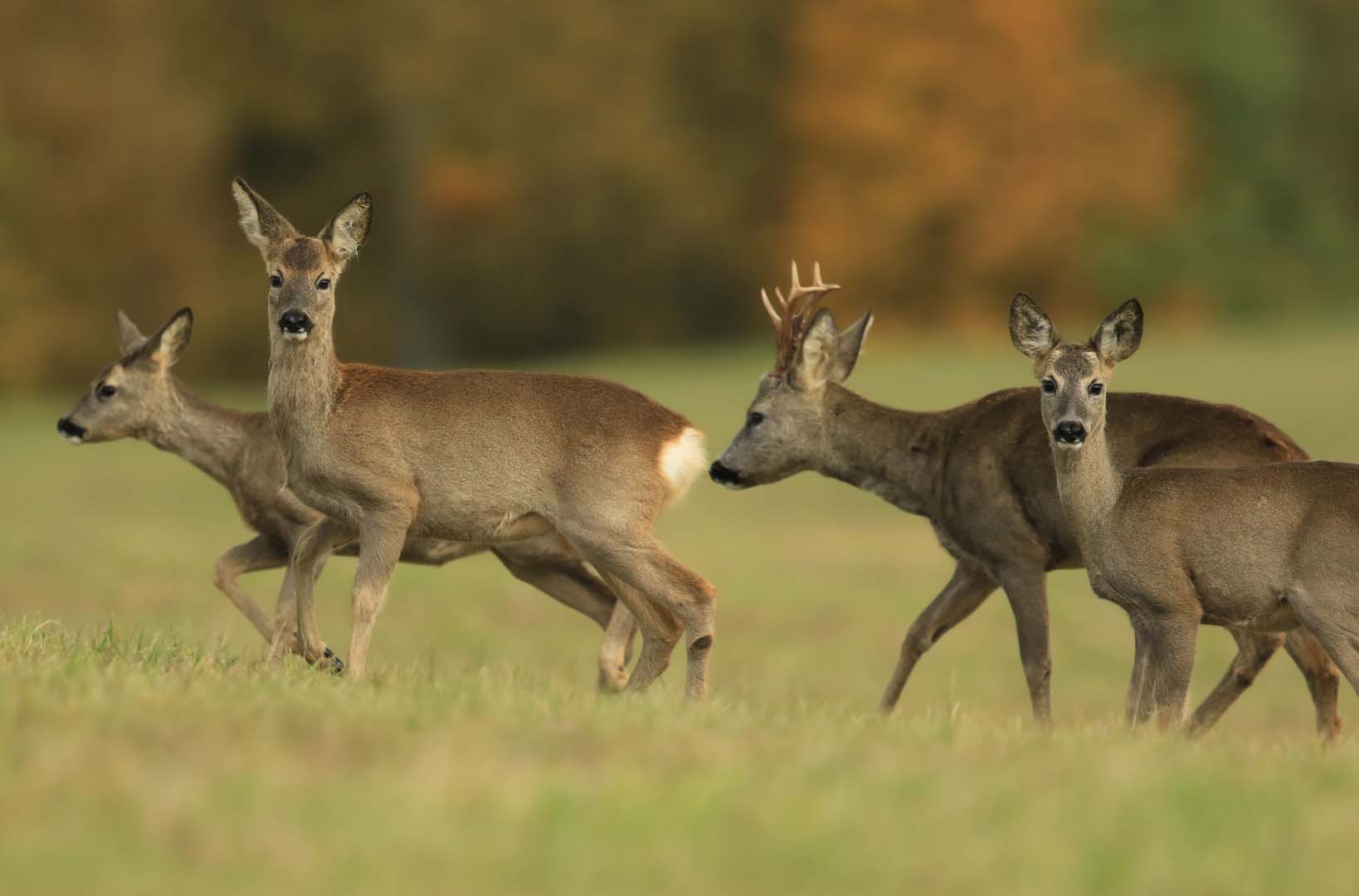
Roe deer have a very unusual reproduction biology. In order to breed in late summer, Roe bucks become territorial in March, at which time they shed the velvet. Other northern deer, such as the Red deer, use the summer’s vegetation to store fat, which is used up later during the fall rut. The Roe buck, however, foregoes costly fattening, forms a territory that overlaps the ranges of two or more females, and breeds these in the Rut, which occurs in late July through early August. For such a small-bodied deer, however, this poses a dilemma, because typically small deer have short gestation periods. If gestation commenced right after breeding, then fawns would be born about 150 days later, in December, in the midst of winter. For fawns to survive and for females to support lactation, fawns must be born in late May, shortly after spring vegetation begins to grow. The Roe solves this problem through delayed implantation, in which the fertilized egg remains inactive in the uterus until late December or even the beginning of January.
At that time the egg implants in the uterus and develops into a fawn, which is born in late May to early June, some 276–295 days after mating. During the Rut, bucks, in a bid to impress does, flatten woodland brush layers into figure of eight shapes that are known as ‘roe rings’.
Roe deer have a high birth rate and often have two (sometimes three) spotted fawns (Valerius Geist, Britannica). Given this unique biology, The Roe deer is also the only known deer species to grow their antlers throughout a winter. Interestingly, despite the relatively long gestation period – the lifespan of a Roe deer is quite short with bucks rarely exceeding 5 years of age and does 6-7 years of age.
Although, during the summer months the Roe deer is often seen on their own or as a mother and her offspring, they do form small but loose groups for comfort. The Roe deer are well adapted to cold environments, and they range from northern Europe and Asia into the high mountains of Central Asia, and south into Spain. Roe deer are most closely related to the Water deer, and, counter-intuitively, the three species in this group, called the Capreolini, are most closely related to Moose and Reindeer (Heckeberg, Nicola S. “The systematics of the Cervidae: a total evidence approach). Roe deer have been hunted since prehistoric times and have been here since the Mesolithic period – their hides, bones and antlers were used in the creation of various tools and articles of clothing. The Roe was once roaming free in the dense woodland that was abundant with hazel, birch, lime, elm and oak. They are associated with the Celtic horned God, Cernunnos, an ancient god of fertility and wild animals, who was often depicted with deer and antlers. In Celtic traditions deer can pass between this world and the Otherworld. Their antlers, shed once a year, symbolise fertility, rebirth and rejuvenation.
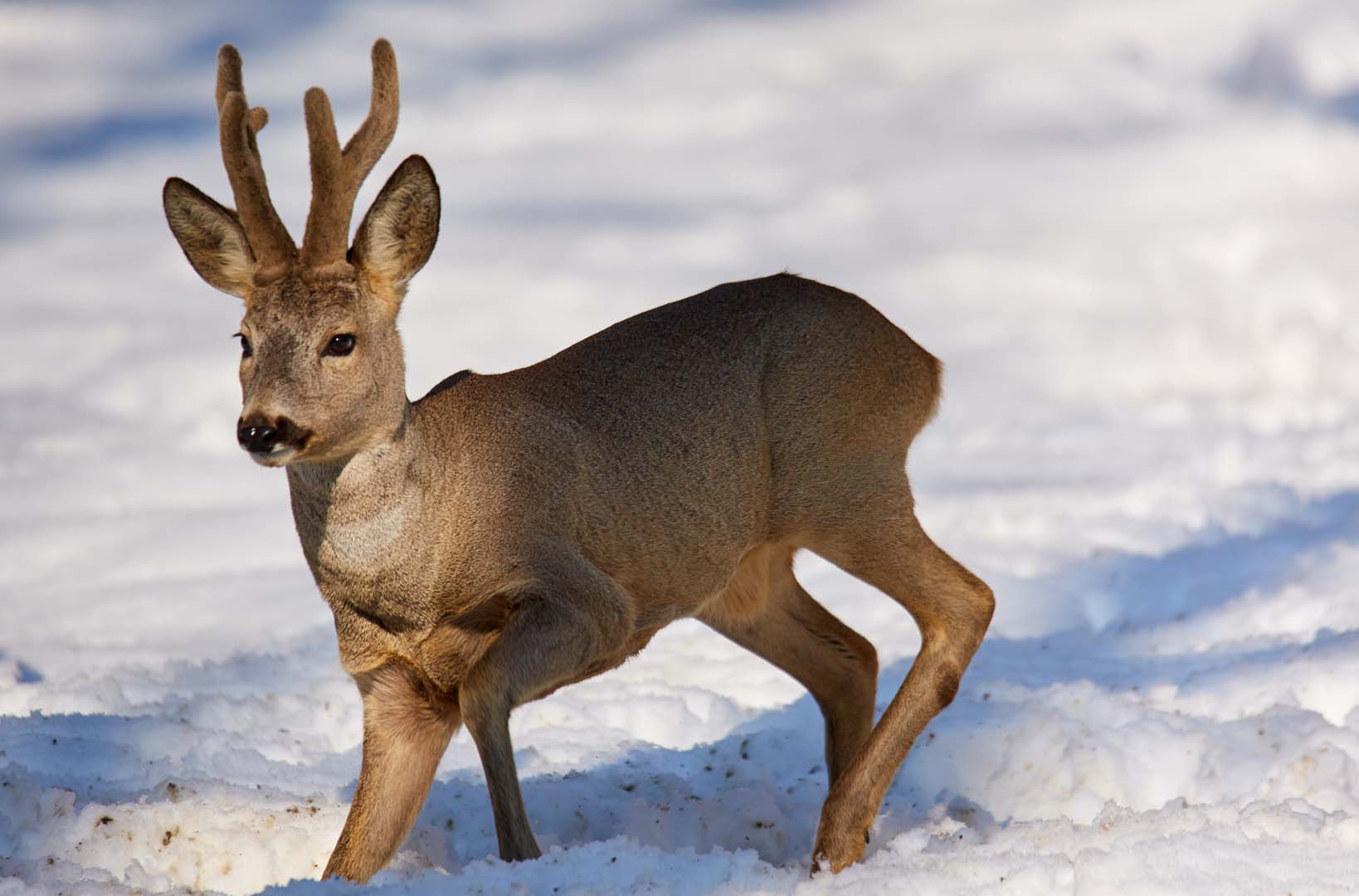
The European Roe deer is well represented in the fossil record from the Middle to Late Pleistocene (Lister et al., 1998; Sommer and Zachos, 2009), and have coexisted with many other large mammal species that perished around the Pleistocene/Holocene transition (for example, mammoth, cave bear, steppe bison, giant deer). During the last glacial maximum, 23 000–18 000 years (Kukla et al., 2002), Roe deer were likely forced into southern refugial populations along with other temperate species, later recolonising northern Europe following climatic warming and deglaciation. During the last glacial maximum, the British habitat was largely under ice and there was a land bridge to mainland Europe. As the Earth warmed during the early Holocene, the land bridge was lost. Subsequent hunting on the British mainland left the southern region extirpated of Roe deer, whereas a refugial population remained in the North. As they became extinct in England, Wales and southern Scotland during the 18th century, populations were re-introduced to southern England (Dorset) and East Anglia in the 19th century. Roe deer may now number as many as 500,000 and are increasing across their distribution. Since the 1970s there has been an increased interest in exploitation of the Roe as a game species and for meat. As a result they are now covered by various Acts of Parliament which impose seasons (when deer may or may not be hunted and a harvest quota), firearms restrictions and controls.
Indigenous to most of the west of Europe, southern Siberia and northern Asia to China and Manchurian in the east, the European, Siberian and Chinese Roe have at one time or another been involved in further distribution at the hand of man. For instance; in 1910, Siberian Roe were introduced by the (eleventh) Duke of Bedford to Woburn Park, In Bedforshire. Those animals established themselves with limited success and survived in small numbers for fifty years, however, the 1950’s saw significant disruption during an era of war time and military disturbances which, in one way or another resulted in the demise. Further successful re-establishments took place in Sussex(c:1800), Dorset(c:1800) and Thetford in Norfold(c: 1884) (Whitehead)
In Scotland, the Roe sustained a period of time during the eighteenth and nineteenth centuries when they were considered practically extinct south of Glasgow/Edinborough Road however, these areas have since repopulated byway of a reintroduction of animals into the Culzean estate in Ayrshire at the beginning of the nineteenth century and there are few areas throughout the County‘s where the Roe won’t be found. In an example of the animal’s ability to adapt, the non-native Roe was introduced to Ireland in the later part of the last century to Lissadel County Sligo from Duplin Castle, Perthshire. The bucks from this area “produced enormous heads, one of which has no fewer than twelve points” (Whitehead). Although the animals were present for just over fifty years, they were exterminated in favour of reforestation efforts and it is now believed few animals exist in Ireland.
Similarly, although the Roe inhabited many parts of Wales, the animal is now all but extinct and is thought to have been for at least three hundred and fifty years. The exact reasoning behind their absence is not clear. Further liberations took place in Finland, where in 1964, forty-three deer were introduced and it was believed by 1987 the herd to be around a thousand strong.
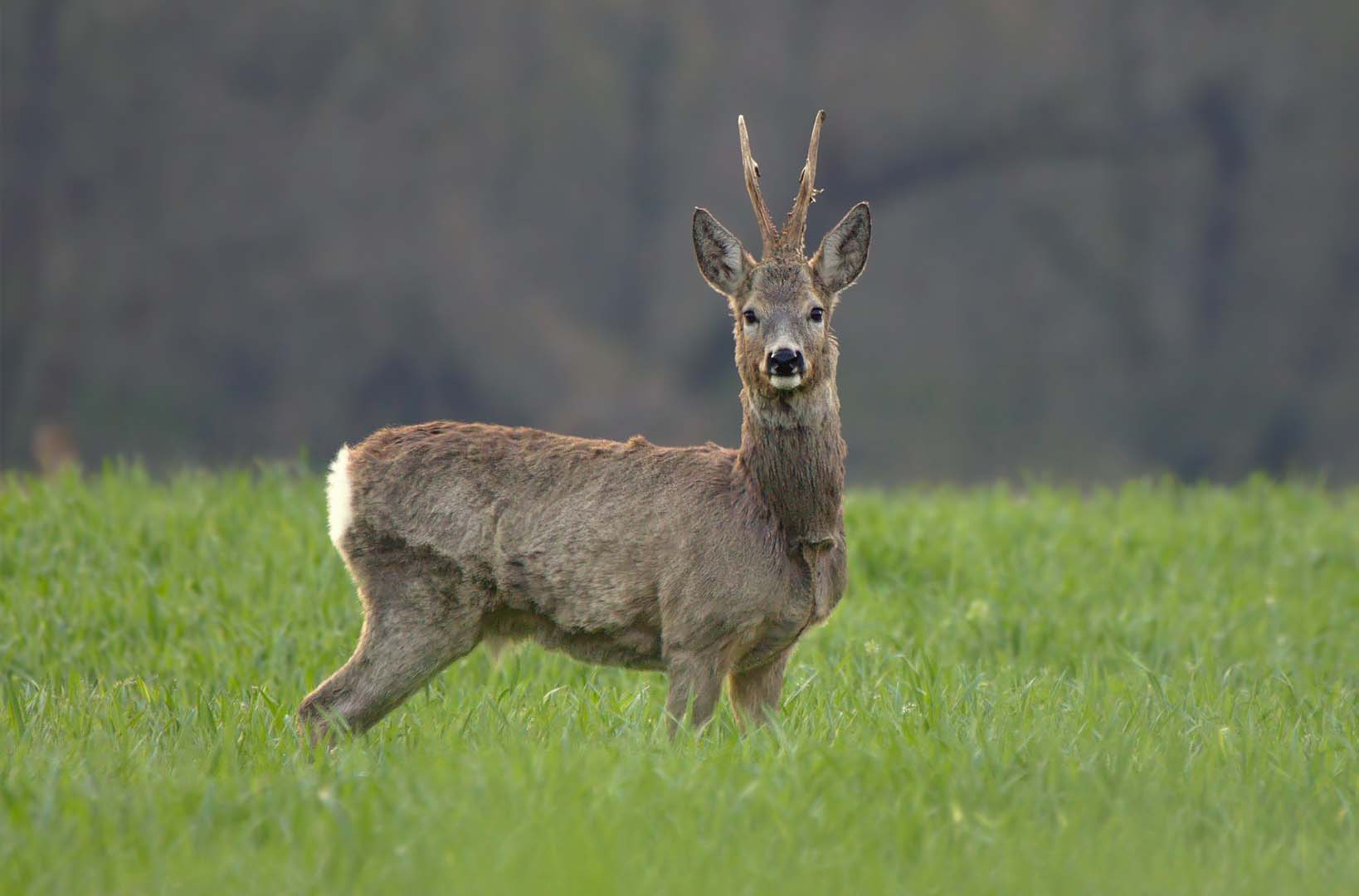
Although Banwell suggests throughout various writing that the Roe would be well suited to a Southern landscape, little surviving data suggests that they were ever successfully liberated into the South Pacific. Whitehead notes, in his Encyclopaedia of Deer that in 1985 a pair died on board a ship destined for Australia. Earlier attempts at having the animal’s presence on the Australian landscape were made, however slightly too late. For instance, a shipment of a small number of what was reportedly Roe deer were destined for Robert Chirnside’s estate in 1896. The Intercontinental covered the story in their editorial. The articles reads, “A pair of Roe deer has been presented to the Zoological Gardens by Mr Robert Chirnside of Carronballoe (Writes Melbourne “Age”). The animals arrived by last trip of the Steamer “Aberdeen” and were imported by Mr Chirnside to be set free on his Estate”. Although with changing laws around the release of animals, the animals were gifted to the Zoo and presumably, never saw their freedom on the Australian landscape.
The Roe’s feeding habit is by way of browsing, their diet includes herbs, bilberries, bramble, ivy, coniferous tree shoots as well as the preferred young grasses and moist leaf shoots. Roe deer are adapted to the forest fringe dwelling. They are especially suited at exploiting the ecological opportunities caused by wild fires and floods. They also take advantage of human landscape disturbances and thrive when given a small amount of care and management. Although they are found in “grassy” meadows and fields, their preferred habitat is woodland and forested areas.
In good news for the Roe deer, populations are reported to be steadly increasing throughout Europe as it is considered a species of ‘least concern‘ (Lovari, S.; Herrero, J.; Masseti, M.; Ambarli, H.; Lorenzini, R.; Giannatos, G. (2016). “Capreolus capreolus“. IUCN Red List of Threatened Species. 2016). Although, as history has shown, those animals witch close perri-urban or distinct interfaces with Humans are fragile in nature and opportunities to hunt these animals should be taken sooner rather than later.
Hunting opportunities for the Roe deer are, as with many deer across Europe, varied. As the Roe is one of the most popular hunted animals across their distribution, selecting a suitable hunting adventure is relatively easy. The Roe can be hunted in a driven hunt, from a high stand on the edge of likely looking habitat or by way of classic calling and stalking or still hunting. With the ability to hunt these Pleistocene survivors across Europe and Asia, the intrepid hunter can expect ample adventure and experience.